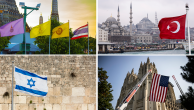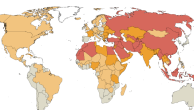This section explores religious switching into and out of Hinduism, reviewing where Hinduism has had the largest net gains and losses, what percentage of adults who were raised Hindu are still Hindu (i.e., retention rates), which religious groups those who have left Hinduism have switched into, and where Hinduism has the largest shares of new entrants (i.e., the highest accession rates).
Of the 36 countries surveyed, just four have sufficient sample sizes to allow analysis of religious switching into and out of Hinduism: Bangladesh, India, Sri Lanka and the United States.19
Net gains and losses for Hinduism
- Very small shares of the overall population in any of the countries analyzed have left or joined Hinduism. In the U.S., Hindus are a small share of the population to begin with (1%).
Remaining Hindu
- The Hindu retention rate is high in all the places analyzed, but there is some variation.
- Nearly all people who were raised Hindu in India and Bangladesh still identify as Hindu today.
- In Sri Lanka, roughly nine-in-ten people who were brought up as Hindus have retained that identity, as have about eight-in-ten in the U.S.
Leaving Hinduism
- Of the countries surveyed, the highest shares of people raised Hindu who no longer identify as Hindu are in the U.S. (18%) and Sri Lanka (11%).
- In Sri Lanka, most who have left Hinduism now identify as Christians. In the U.S., 11% of people who were raised Hindu are now religiously unaffiliated (i.e., they identify religiously as atheist, agnostic or “nothing in particular”) and 6% are Christians.
Entering Hinduism
- Most people who currently identify as Hindu say they were raised as Hindus, resulting in low “accession” (or entrance) rates into Hinduism across the four countries analyzed.
- The U.S. has the highest accession rate, with 8% of Hindu American adults saying they were raised outside of Hinduism.
Where has Hinduism experienced the largest net gains or losses from religious switching?
Across the four countries analyzed, relatively few people (at least, as a percentage of the overall public in each country) have either left or entered Hinduism.20
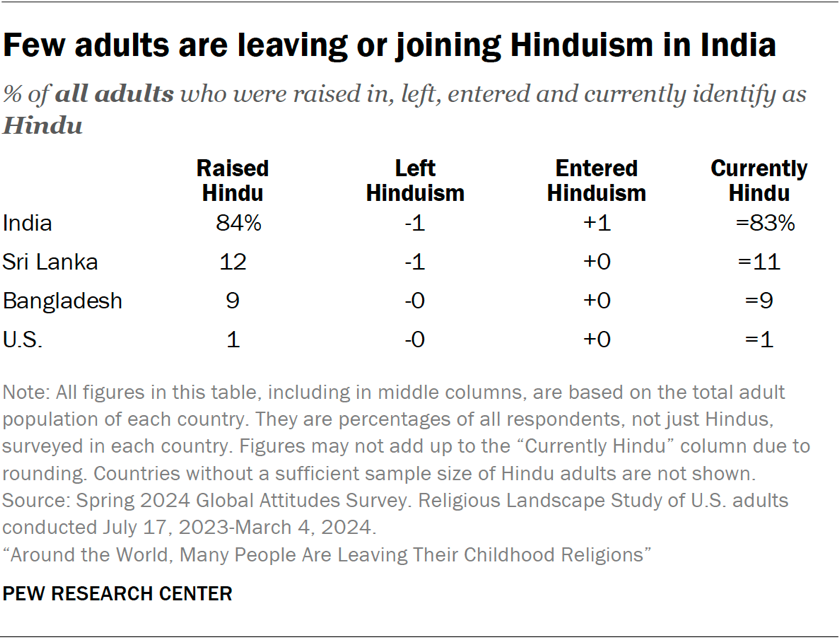
For instance, in India, the country with the world’s largest Hindu population, roughly equal shares of Indians say they were raised Hindu (84%) and currently identify as Hindu (83%). Only 1% of all Indian adults have left Hinduism, and a similarly small share have become Hindus after having been raised in another religion or with no affiliation.21
In the U.S., just 1% of adults were raised Hindu, and the percentage of all U.S. adults who have left Hinduism rounds to zero – as does the percentage who have switched into Hinduism.
What percentage of people raised Hindu are still Hindu?
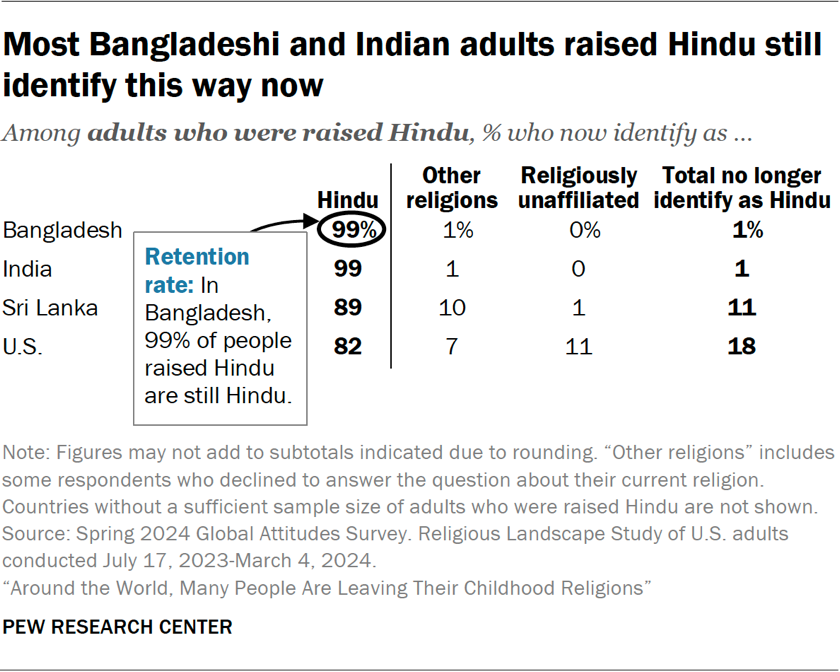
The Hindu retention rate is high in all the countries where it can be measured. For example, in Bangladesh and India, nearly all adults who were raised Hindu still identify as Hindu today (99% each).22
Which religious groups have former Hindus switched to?
Analyzing retention rates also reveals the religious groups that former Hindus have joined. In the U.S., 18% of U.S. adults who were raised Hindu no longer identify as Hindu – including 11% who are now religiously unaffiliated, 6% who describe themselves as Christians and 1% who now identify as Muslims.
Meanwhile, in Sri Lanka, 8% of adults who were raised Hindu now identify as Christians, while equal shares describe themselves as unaffiliated, Muslims or Buddhists (1% each).
Where does Hinduism have the largest shares of new entrants?
Most people who currently identify as Hindus say they were raised Hindu. For example, all the Bangladeshi Hindus surveyed say they were raised Hindu.
As such, the “accession” (or entrance) rates into Hinduism are low across the four countries with sufficient sample sizes to analyze.
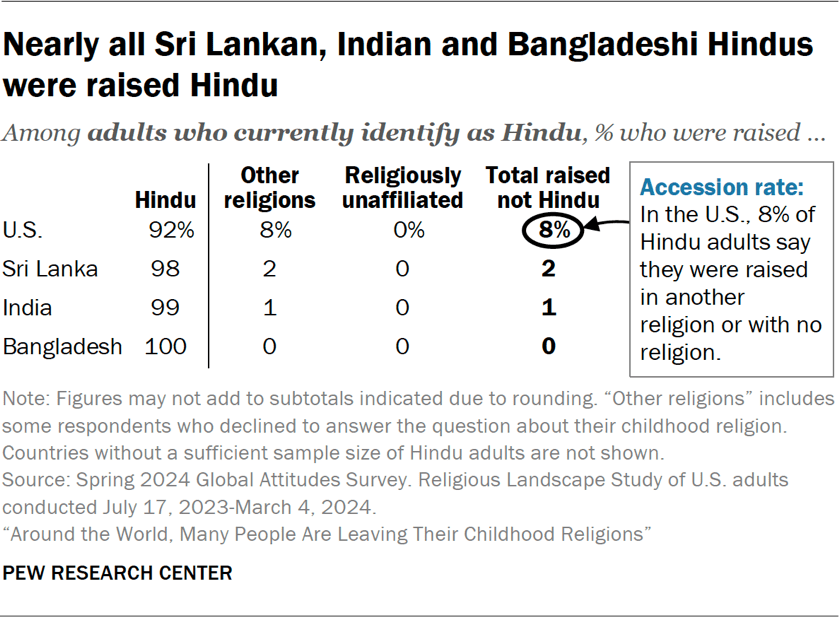
The U.S. has the highest accession rate, with 8% of Americans who currently identify as Hindu saying they were raised outside of Hinduism, including many who were raised Christian (5% of all Hindu Americans).23


